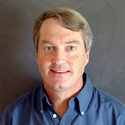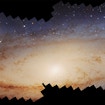Black Holes, Quantum Mechanics and Firewalls

Joe Polchinski, Kavli Institute for Particle Physics, UC Santa Barbara
Thought experiments have played an important role in figuring out the laws of physics. For the unification of quantum mechanics and gravity, where the phenomena take place in extreme regimes, they are even more crucial. Hawking’s 1976 paper “Breakdown of Predictability in Gravitational Collapse” presented one of the great thought experiments in the history of physics, arguing that black holes destroy information in a way that requires a modification of the laws of quantum mechanics. Skeptics for years failed to
poke holes in Hawking’s argument, but concluded that if quantum mechanics is to be saved then our understanding of spacetime must break down in a radical way. I present some of the history of these ideas, what has already been learned from this puzzle, and the recent `firewall’ controversy, which argues that Einstein’s theory breaks down radically for an observer falling into a black hole.
Reading material here and here. (pdf)
Lecture Slides (pdf)
About the Speaker
Joseph Polchinski (Joe) received his BS in Physics from the California Institute of Technology in 1975, and his PhD in Physics from UC Berkeley in 1980. After two-year stints as a research associate at the Stanford Linear Accelerator (SLAC) and at Harvard, he joined the faculty at the University of Texas at Austin in 1984. He moved to UC Santa Barbara in 1992, where he is a Professor of Physics and a Permanent Member of the Kavli Institute for Theoretical Physics.
Polchinski’s contributions to theoretical physics include a modern formulation of renormalization theory and some of the original work on the string landscape. He is best known for his discovery of D-branes, extended structures that appear to be central to the mathematics and physics of string theory. He is also the author of a widely used two-volume text on string theory.
Polchinski held an Alfred P. Sloan Fellowship from 1985 to 1989. He was elected a fellow of the American Physical Society in 1997, a member of the American Academy of Arts and Sciences in 2002, and a member of the National Academy of Sciences in 2005. He has been awarded the 2007 Dannie Heineman Prize in Mathematical Physics of the American Physical Society, and the 2008 Dirac Medal of the International Center for Theoretical Physics, Trieste and the 2013 and 2014 Physics Frontiers Prizes.


